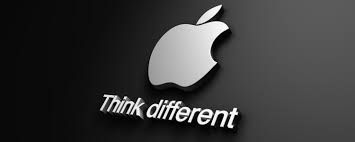
In the world of business, developing a winning formula to create premium pricing and boost profitability is a code many businesses never crack and few even know exist. One of the most powerful weapons hidden in plain sight and underutilized by many businesses is differentiation. This article explores the power of differentiation, the most common mistakes and misconceptions made by most companies, and the pivotal role a well-defined buyer's persona plays in experience.
Mistakes, Misconceptions, and the Struggle to Differentiate:

Before diving into the benefits of differentiation it is important to understand the common mistakes and misconceptions that stop most companies in this Pursuit. Many businesses fear that narrowing their focus will limit their customer base, so they fall into the common trap of trying to be everything to everyone. However the reality is that the more clearly differentiated you are from your competition the easier it is to maintain a competitive advantage.
Moreover, without a clear understanding of their target audience, companies struggle to differentiate effectively. This is where the importance of a buyer’s persona profile comes into play. By developing a deeper understanding of your dream clients, their needs, pain points, and aspirations, you can tailor your differentiation strategy to align with their desires and create a magnetic attraction to your products and services.
How Apple Achieved A Trillion-Dollar Valuation With Differentiation:

One of the most powerful examples of how product differentiation vs. company differentiation can revolutionize an industry is the story of Apple Inc. In the early 2000s, the mobile phone market was heavily dominated by giants like Motorola and BlackBerry. Little did people know what Apple had up their sleeves.
Instead of introducing just another phone, Apple saw to create an entirely new category of devices. The result was the groundbreaking iPhone - convergence of a computer, phone, and music player, all in a sleek and intuitive package. This bold move allowed Apple to remove the limitations of traditional phones and capture the hearts, minds, and pocketbooks of consumers worldwide.
The iPhone's unique value proposition lay in its seamless integration of hardware and software, elegant design, and intuitive user experience. This was a paradigm shift in the way people interacted with their phones, offering an unparalleled convenience, functionality, and aesthetic appeal in the market. By differentiating itself as a lifestyle device, Apple simultaneously positioned the iPhone to cater to the evolving needs and desires of tech-savvy individuals all while becoming the most in demand phone on the market.
Apple's differentiation strategy had a truly revolutionary impact. The iPhone gained a cult following, with customers lining up for hours to get their hands on the latest model. Its popularity skyrocketed, leaving once-dominant players like Motorola and BlackBerry virtually nonexistent in today's market.
Through its defiance of industry norms and unwavering commitment to differentiation, Apple not only secured a substantial market share but also revolutionized the entire technology landscape. The company's relentless pursuit of innovation and its dedication to setting itself apart propelled it to become the world's first $3 trillion company.Using Differentiation As A Competitive Advantage:

The Apple story highlights the power of differentiation. When done right, differentiation becomes a crucial element of an overall business strategy, leading to a competitive advantage and increased profitability. By offering something unique, businesses can stand out from competitors, attract their dream clients, and command premium prices.
To harness the power of differentiation for your own business, consider the following steps:
Step 1: Identify Your Unique Positioning:
Conduct a thorough analysis of your industry and competitors to identify areas where you can differentiate your offerings. Look for unmet customer needs, gaps in the market, or opportunities to redefine existing products or services. Different products can also be tied to different target markets.
Step 2 : Innovate and Create Unique Value:
Continuously innovate and enhance your products or services to provide unique value to your customers. Focus on developing features, functionalities, or experiences that set you apart and cater to the specific needs and desires of your target audience.
Step 3 : Craft a Compelling Brand Story:
Develop a narrative that communicates your brand's values, mission, and unique selling points. Align your messaging with the emotions and aspirations of your target market, fostering a deep connection and establishing a sense of exclusivity.
In the quest for increased prices and profitability, differentiation emerges as a secret lever that can unlock the true potential of a business. Apple's incredible success story serves as a shining example of how differentiation can reshape industries, disrupt the status quo, and propel businesses to new heights. By embracing differentiation and creating a unique value proposition, you can position your company as a market leader, drive customer loyalty, and achieve long-term success.
To learn more about leveraging differentiation and creating a dream offer that sells products and services at a premium, download our guide, "Build Your Buyer Persona Profile," today. Take the first step toward achieving true differentiation and realizing the full potential of your business.










